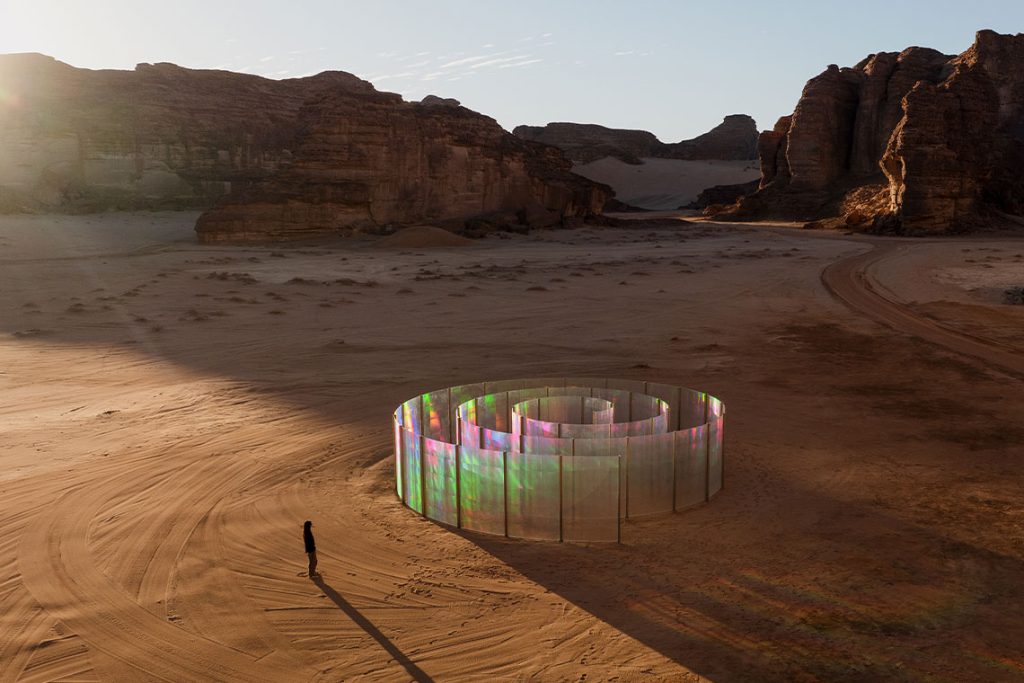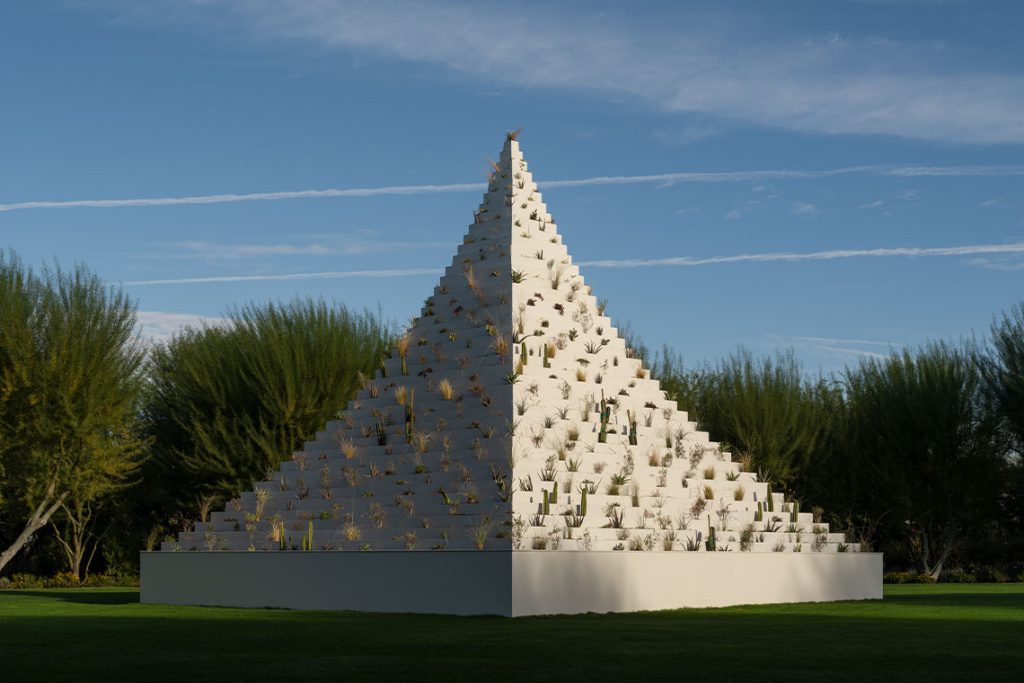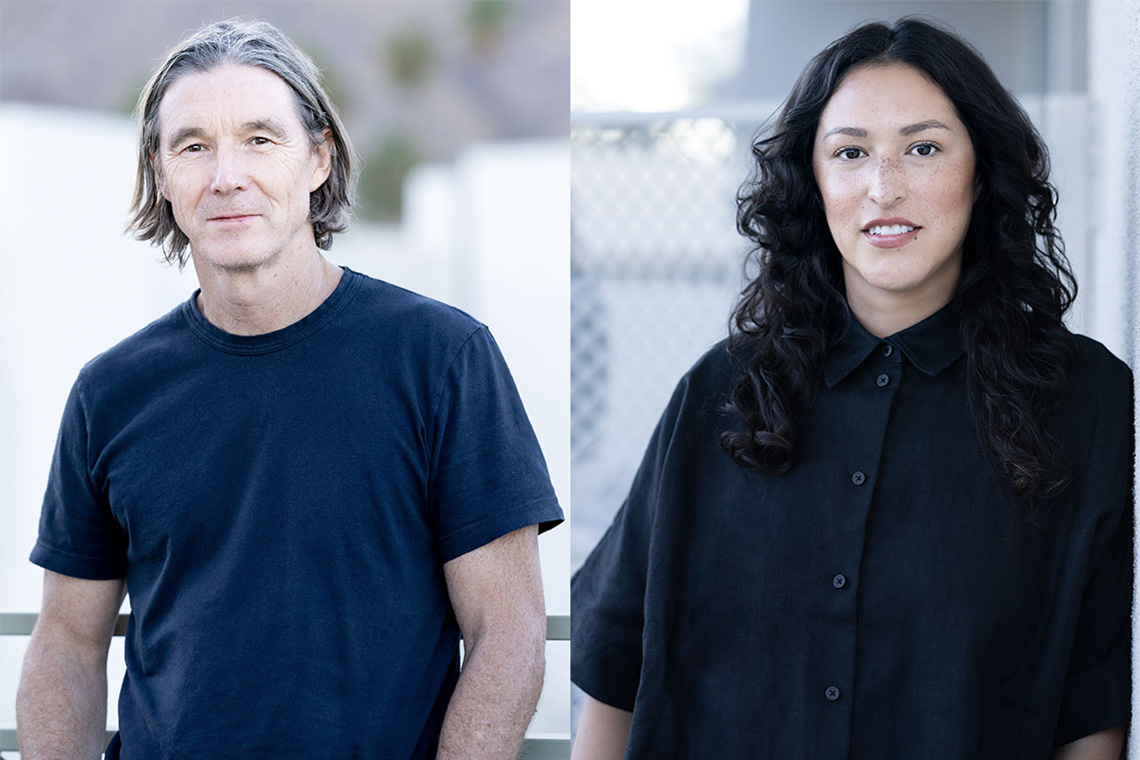The curators of Desert X 2025 Coachella Valley reveal what we can expect from the upcoming edition and how artists look at the desert through unique perspectives and understanding to create works that speak in dialogue with the landscape.
Canvas: What can you tell us about the fifth edition of Desert X in Coachella Valley and how it builds upon your work together in 2022 on A Divided Landscape?
Kaitlin Garcia-Maestas: Neville and I co-curated A Divided Landscape at the Momentary in Arkansas. The exhibition brought together a group of creatives, mostly artists of colour and indigenous artists, to talk about the issue of the American West, with contemporary works paired alongside a selection from the permanent collection. The exhibition took place both indoors and outdoors, and a number of artists created site-specific, large-scale projects. It was the first time that Neville and I had worked together, but what carried over from that project is the way in which we collaborate and the trust that was established. For Desert X, we were starting from a place of familiarity and from us both being deeply site-specific curators who see the role of curator as that of a facilitator, bringing together artists and a particular place. Certainly in Desert X, we co-curated with the landscape.
Neville Wakefield: What was interesting about the show in 2022 was that the site being represented was a pictorialised landscape, historically often fictionalised and projected from a settler point of view. So it was really about how these ideas of landscapes become vehicles for certain types of narrative. We very quickly moved pictorialisation into an actual space, the Coachella Valley, and it was interesting to make that transition.
How important is the historical context of Coachella Valley and why was this location chosen for Desert X?
NW: Coachella was where we started Desert X in 2017. It’s best known for an event called Modernism Week, which celebrates Mid-century Modern architecture, and of course for the Coachella Music Festival. There’s also a film festival, so the location already had a cultural framework with an audience and a clear interest. The missing spoke in the wheel was the visual and experiential arts. What Kaitlin and I talked about a lot was how the desert had undergone such rapid change. There have been moments such as the mid-twentieth century, when the impressive architecture was built, but other times during which different forces, either economic or social, have been written very clearly into the desert. It is a place where artists can interact with an environment that is replete with social, historical and architectural activity.

Image courtesy of Axel Vervoordt Gallery.
Which areas of discussion come up when looking at desert landscapes?
KGM: We invited more than twenty artists to come to the desert, and during those site visits you are often spending two to three days, all day, every day, driving to the desert with them. Although some of the artists may have been born and raised in Southern California, none of them are from the Coachella Valley specifically. I think their overall observations of the desert tend to inform the themes that we see in the projects themselves, one of which has been the realisation that desert is not at all an empty space. It is undergoing many of the same issues that urban environments are experiencing, including gentrification. One social issue that has been in the news a lot, and has been a really pressing concern for a number of the artists, is the ongoing negotiations between the city of Palm Springs and a group of African American residents from the Desert Highlands Estate community about reparations. Mid-century Modern architectural history has also been fascinating for some of the artists in terms of thinking about how we define what is meant by ‘living within nature’. Many of the projects are responding, either directly or indirectly, to this idea by building their own architecture or interrogating the need for permanent architecture.
NW: As a space, the desert is the harbinger of the ecological future in many ways, as the world is becoming increasingly desertified. There are also associated ideas of environmental justice and of how, through concepts that are both futuristic and ancestral, we might relate to an environment that is going to be ever more present.
What practical concerns do you have to consider when commissioning artists to create works for this type of environment?
KGM: One very important consideration is the wind. The Coachella Valley is one of the windiest regions in the United States, which means that all of the projects have to be engineered to withstand extremely high winds. We’re all embarking on new understandings of what it means to be doing outdoor work in a climate crisis, so there are some very real considerations around how the landscape itself has shifted as a result of flooding and other major climate catastrophes in Southern California and the Coachella Valley specifically. In some instances the artists are mining from the earth itself, with the earth becoming the material. What can withstand the desert better than the desert itself?

Photography by Lance Gerber Image courtesy of Desert X
What can we expect from some of the commissions this year?
NW: There’s an interesting amount of site verses non-site dialog, where works refer to where they’ve come from and the context they will be placed in. This can be in a form as simple as the material, as with Jose Dávila’s piece, which was extracted from Mexico and placed in California. In other instances the connection is to where a work has previously been shown, such as Kimsooja’s installation, which is an iteration of the piece that was in AlUla in 2024, but is now placed in a different context, environmentally and conceptually. It is about light and space, so the dialogue is expanded by placing it in the context of the West Coast, which is the birthplace of the Light and Space movement.
KGM: There are a number of artists in the exhibition who are either from the desert or have ancestral ties to the desert, which was something that personally interested me for this edition. I’m from New Mexico, from the High Desert originally, and I was very intrigued by what it would mean to bring artists who live and work in the desert generally into the specific Desert X environment, and see how their level of intimacy and understanding of this type of landscape – even though it’s not the same desert – might advance the possibilities of their work.
Two artists who have risen to the occasion are Ronald Rael and Cannupa Hanska Luger. Ronald is an architect, originally from the border of New Mexico and Colorado, and since 2020 has been doing experiments in 3D printing Adobe in his family’s ancestral homeland. The project is building off his intimate knowledge and understanding of earth and landscape, and Desert X is just a platform that we are offering him to continue on a much larger scale.
Cannupa Hanska Luger is a Native artist who lives in New Mexico and has been working on a series of future ancestral technologies by harnessing science fiction and its power to shape collective thinking. His intimacy with the desert landscape has given him the courage to push the project, the final formation of which is going to be a nomadic sculpture in the form of a futuristic van, which will set up camp in a few different sites throughout the desert. The work is considering how, through a futuristic lens, indigenous people can apply sustainable technology to live nomadically with the land. It also considers the resources, ancestral wisdom and knowledge that indigenous people possess and continue to exercise through indigenous sovereignty in the United States.
Prior to the opening in March, The Living Pyramid by Agnes Denes was installed.
NW: Yes, Agnes Denes, who also showed in AlUla and has a project in process at Wadi Al Fann, has installed her work The Living Pyramid. It is a living artwork, with previous iterations all built in temperate climates where things tend to grow quickly. The attraction for Denes about doing something in the desert was because the growth cycle is unique. We’ve talked a lot about the space of Desert X and the desert itself, as well as the element of time. It is a pyramidal form with indigenous plants that speak to the life cycle of the desert, and will be up for ten weeks.



